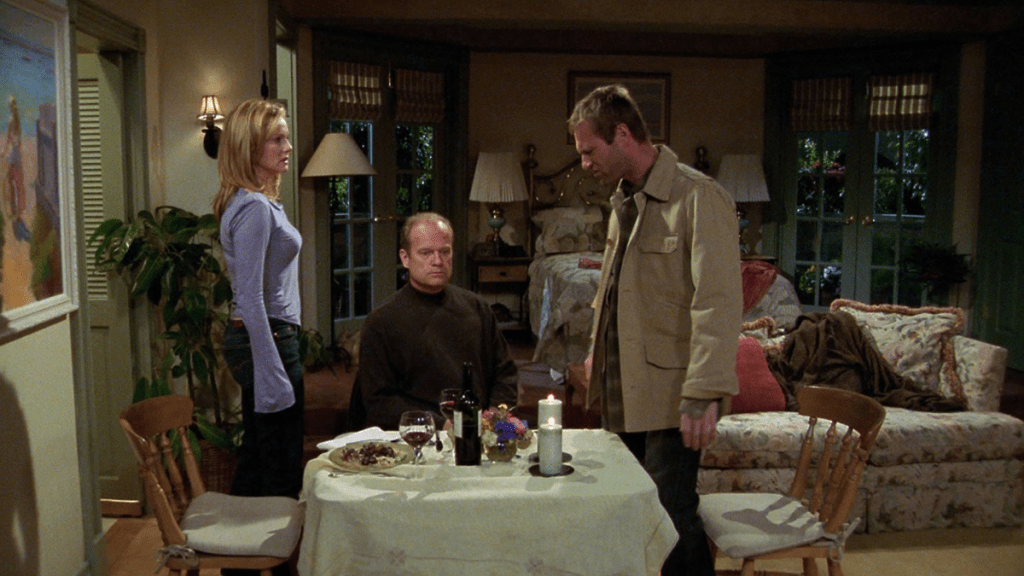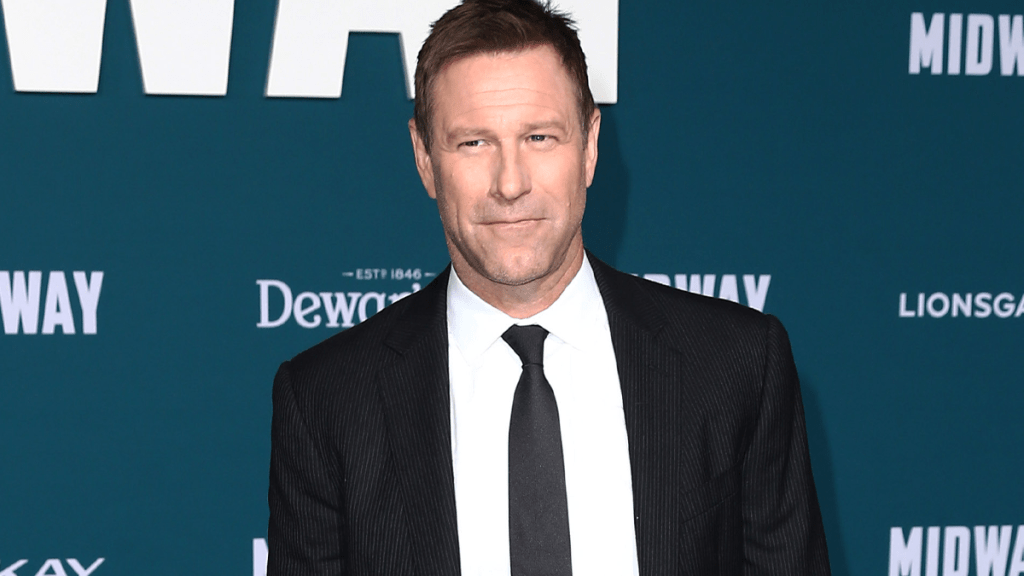ComingSoon Editor-in-Chief Tyler Treese spoke with The Bricklayer star Aaron Eckhart about the intense action movie. The actor discussed how he did the film‘s fights himself, his own passion for hands-on work, and his guest spot on Frasier. The film is now available digitally and through video-on-demand platforms.
“The Bricklayer follows a rogue insurgent blackmailing the CIA by assassinating foreign journalists and making it appear the agency is responsible,” reads the movie‘s synopsis. “As other nations begin turning against the U.S., the CIA must lure Steve Vail (Eckhart) – their most brilliant and rebellious operative – out of retirement. With an elite and deadly skill set, Vail is tasked with helping clear the agency’s name, forcing him to confront his checkered past while unraveling an international conspiracy.”
Tyler Treese: The action in The Bricklayer is pretty unique. Your character really goes through it. You’re not just demolishing the people you’re going up against — these are back-and-forth fights where a lot of damage accumulates over time, which is factored into the fights later on in the film. What was most intriguing about the action in this particular movie? I thought it was all very well done.
Aaron Eckhart: Thank you. First off, I did it all myself — Renny [Harlin] and I talked about it, and I said, “I’m going to do all my fights.” So we choreographed those fights. I got there a couple of weeks early and did that. It really helps for if I’m throwing the punches, I’m taking the hits, and you don’t have to cut away. That was number one. Then, Renny’s beautiful, stylized filmmaking — knowing the lenses and the angles and knowing action.
Renny is a great action director, so I think between the two, we worked well together in that sense … and not afraid of getting hurt and banged around and doing it. As I said before, Renny told me about these elevator fights or rooftop fights, and then he said, “Oh yeah, and we’re doing it in the rain.” And it was a cold night. [Laughs]. Doing those in the rain, but I think they paid off.
How physically taxing was it to do all of the fights?
Taxing in the sense that I want them to look real. I want to feel like I’m in a fight, you know? Fight planning and fight training with the guys and making sure everything’s right … they’re coming at you fast, making sure that every hit looks like it’s a hit and you’re swinging with your hips, and you’re recovering, so there’s a lot that goes into it.
Then, actually, when you are fighting — trusting the guys you’re fighting with, and then trying to make it as look as brutal as you possibly can … that’s the part of filmmaking that I actually enjoy — especially if you have a good dance partner, because you could do a little extra in there. I’m not afraid to get hit, and he’s not afraid to get hit. For example, in that elevator scene, we were wrestling in there. I think, after probably the first two or three seconds, we forgot everything we knew and were just going at each other, you know? [Laughs]. It just turns out good.
What I love about this movie is that, while it’s an action film, it takes a breath that allows for some really good character moments, as your character’s dealing with your past. What did you like about that combination?
Renny’s a big softie, you know? I mean, he loves drama and he loves story and plot and it’s a big deal for him, that it’s not just action, and for me as well. And that there’s a backstory. I know Renny calls me up and he’s telling me all about my backstory. [Laughs]. Telling me what I did and all this stuff. I’m like, “Okay, okay.” He’s into it and he’s into every aspect of the filmmaking — the creative, the technical, obviously, but also the acting. It’s important to ground the film. It’s important that Nina [Dobrev] and I have a good relationship, that she’s coming from somewhere and I’m coming from somewhere.
We have to try to give the audience different layers, and I think we did that. I think the story does that. I think that filming in Thessaloniki in Greece — the streets, the old buildings, the cobblestones, the sea, their nice modern art buildings — I think all of that plays a character in the film. It just gives it a little bit more depth.
I was curious, since your character’s seen working as a bricklayer, are you much of a handyman? Do you have any interest in construction and building and such?
Tyler, right now as we speak, I’m painting my house.
[Laughs]. There we go.
[Laughs]. And I’ve only stopped painting to talk to speak with you. Yes, I’m very hands on. Tyler, if you could have seen me yesterday … [Laughs] I was doing it all. It’s something that’s gives me … that’s probably why I work, is to get back here and to clear up and work on things.
That’s really cool. You talked about Renny giving you all this backstory for the character. It’s also based on a novel by Paul Lindsay. When it came to basing your character, did you also read the novel or were you going off what you and Renny talked about?
I did read the novel. As much information as you can possibly get is good. Now, I will say that, in the movie business, unfortunately because of logistics and budgets and days and all that — locations that you have to switch up — sometimes, when you get the script, it’s not exactly how the book was. The more people get involved, the further, I think, the script gets away from the novel and true essence.
But yeah, I always like reading as much as I possibly can — studying bricklaying, which I did. I’m not saying I’m any good at it. It’s very difficult to do and especially to make look effortless. It’s actually quite difficult, but I did as much as I could to make it look authentic. I’m an information junkie, so anything else that Renny can give me, I take as well.
You and Nina have such a great chemistry on screen, and it’s a fun dynamic with how they change over the course of the film. What stood out about her as a scene partner?
She’s willing to go for it, you know? She’s there for whatever we need to do. Whether it be action or drama, she’s there with you as an acting partner. She’s not just there for herself. We’re trying to create characters and have energy flowing between us that is realistic. You feel like you have a true partner. I mean, she’s my partner in the film and she’s my partner in real life making the film, and that’s greatly appreciated. I feel like that’s what I am for her as well — somebody to lean on and somebody to hopefully make something good with.

NBC & ParamountI haven’t seen you talk about this much, but 20 years ago, you had a very memorable guest appearance on Frasier as Frank. What stood out about that experience? You were a really fun fit on the sitcom and you and Kelsey Grammer really played off each other well,
Thank you very much, I appreciate that. Kelsey — the whole cast, but Kelsey … look, I don’t know that format. It’s a three-camera, you film in front of … I didn’t know any of that existed. I grew up on Happy Days, of course, but it was all new to me, and seeing these guys work the cameras and work the script and everything … I was terrified, and Kelsey and everybody was just so wonderful, and Laura Linney was on that as well. I really got a glimpse into a world that I know nothing about, which is the three-camera television sitcom show. And I have to say, I liked it. I remember, one time, I was on a plane with Courteney Cox and she asked me to help her study an episode of Friends, just read lines with her.
I was reading it and, because I’m a huge fan of Friends, I said, “Huh, that’s weird. It doesn’t seem as funny here as it does when I watch it.” And she says, “Yeah, that’s because of what we do.” And those guys are just absolute professionals at turning a word up on its end or going down or doing something, and it all just makes sense. I’d never known anything about that world, and I got a glimpse of it on Frasier, because nobody’s better at it than Kelsey Grammer and how small he was and what he did just to make a laugh, and how exhilarating it was and how it led into the next moment. So it was very educational and I’m glad I did it.










